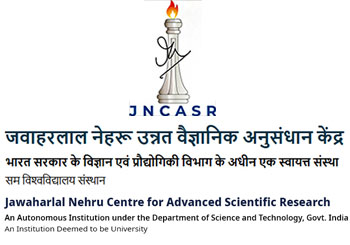TSU COLLOQUIUM
TSU COLLOQUIUM
Speaker: Dr. Ashesh Ghosh
Affiliation: Postdoctoral Scholar, Stanford University, USA
Title: Fluctuation Driven Systems: From Glassy Dynamics of Associating Polymers to Deformations of Liquid Crystalline Polymers
Date and Time: 10 February 2023 (Friday) at 11:00 AM (Tea: 10:45 AM)
Venue: Nevill Mott Hall, JNCASR
Abstract
Fluctuation-driven heterogeneous cooperative dynamics and self-organization are signatures of a diverse class of physical systems, from polymer (and colloidal) glasses to biopolymers. In this presentation, I will talk about two such systems where either fluctuation-controlled dynamics or the effect of fluctuations around the mean-field state of the system are crucial.
Firstly, I will discuss the formulation of a microscopic liquid state theory of how attractive functionalities between sticky groups regularly co-polymerized in a chain backbone affect local structure and segmental dynamics of unentangled polymer liquids. Based on the bare attractive interaction and single-chain structure as input, integral equation theory is combined with activated dynamics approaches that capture caging and physical bond formation to study emergent high-frequency elasticity and local relaxation processes. The dynamic free energies and corresponding sticker and non-sticker barrier hopping timescales that define the coupled bond breakage and cage escape processes are predicted within a two-step dynamical scenario that applies in the strong attraction regime. The first step involves non-sticker hopping (alpha relaxation), which is perturbed due to physical bonds between sticky segments that act as pinning constraints. This theoretical development will be supplemented by a discussion comparing the theory predictions for alpha relaxation time and the glass transition temperature of associating polymers with experimental results.
Secondly, building on the exact single-chain statistics of semiflexible polymers and mean-field solutions for both isotropic and nematic states, I will discuss extending a theory for the free energy functional of semiflexible polymer solutions with alignment interaction up to quadratic order to specifically understand the three Frank elastic (FE) constants of long-wavelength splay, bend, and twist modes of deformation. Enhanced alignment of polymers in their nematic state is responsible for crucial mechanical and material properties of fibers found in both biological systems and chemical physics. These deformations characterize the normal modes of the deviation of the local nematic director field of liquid crystalline behavior. The theoretical picture suggests that the three FE constants can be exactly mapped to correlation functions involving real spherical harmonics. Numerical simulations supplementing the theoretical discussion suggest excellent agreement, and the presented theory serves as a basis for understanding protein-brush-induced membrane deformations important for membrane tethering and fusion.
- Back to previous page
- |
-
Page last updated date:11-03-2025 03:09 PM























